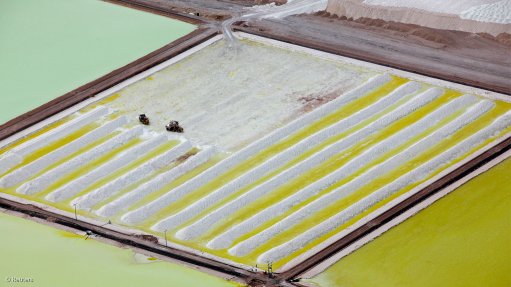
IN DEMAND Cadence Minerals believes that the increased demand for electric vehicles is a significant driving force behind the increased demand for lithium worldwide
Photo by: Reuters
Lithium prices are likely to remain elevated at around $9 500/t until at least 2021, which is a significant increase on its historic pricingsof $6 500/t. This is attributable to rising demand and impending supply deficits from 2019, says lithium and rare-earth elements assets developer Cadence Minerals CEO Kiran Morzaria.
He was quoting analysis by German global banking and financial services company Deutsche Bank, while speaking during the bank’s Virtual Investor Conference webcast, last month.
Cadence, which was previously known as Rare Earth Minerals, believes that the increased demand for electric vehicles (EVs) is a significant driving force behind the increased demand for lithium worldwide.
“Not only cars but, soon, buses, lorries, large transportation and passenger vehicles will depend on rechargeable batteries, which require lithium to fuel these batteries,” Morzaria stated.
He said that, according to the company’s estimates, the amount of investment required to develop the large number of lithium assets worldwide to match growing demand over the next six to ten years was about $5-billion.
“To date, there has been about $1.8-billion invested, with the [bulk] of it being done through equity funding ($1.2-billion) and [most] of this funding raised from Chinese financiers through offtake agreements and battery manufacturers,” Morzaria commented.
However, he noted that the problem with developing mineral assets generally was that they had a very low chance of success (as low as 2%). It was for this reason that Cadence’s investment strategy was underpinned by very strong global demand and high pricing for lithium; exposure to investments along the development curve; low-cost projects with “giant” resource bases; and projects focused on capital increases along the growth curve.
He highlighted that the company had an ambitious team with key engineering, technical, corporate and financial experience and skills. Morzaria, a qualified engineering geologist, has over 20 years’ experience in the exploration and mining industry. The company’s executive chairperson, Andrew Suckling, has over 20 years’ experience in the fund management, metals trading and hedge fund sector. Suckling is a founding partner, research analyst and trader at New York-based asset management firm Ospraie, which at its peak had $9-billion under its management.
Additionally, Cadence FD Donald Strang, a qualified chartered accountant and member of the Australian Institute of Chartered Accountants, has in excess of 20 years’ finance experience and, for the last decade, has focused on the mining and exploration sector. The company’s nonexecutive director, Adrian Fairbourn, has, during his career, assisted in structuring, capital and fundraising projects valued at over $1-billion for several private companies.
Morzaria said that the company’s experienced management team had enabled it to identify low-cost, high-value assets that could and should be developed.
The company has an extensive geographic spread of lithium assets at various stages of the development curve. These include the Nevada (US), Sonora (Mexico), Cinovec (Czech Republic), Karibib (Namibia) and Pilbara (Australia) lithium projects.
To date, the company’s total return on investments stands at around 111%. “We have invested about £17-million in project development and our asset base stands at £38-million,” Morzaria remarked.
Meanwhile, he said that, currently, 28 GWh of energy worldwide was produced using lithium-ion sources; however, many companies had committed large sums of financing (estimates range from between $25-million and $30-million) to the establishment of lithium-ion battery plants worldwide, which Morzaria said would see this increase by more than 500% to 174 GWh by 2020. He noted that these figures excluded recent announcements made by US automotive giant Tesla about similar such investments in battery plants. Therefore, Morzaria said, there were further opportunities for investment in the sector going forward.
Moreover, he highlighted that, according to price data collection and assessment company Benchmark Mineral Intelligence, EVs were the key driver of overall demand,which is expected to increase by a compound annual growth rate of 11% year-on-year.
Morzaria added that, according to Benchmark’s forecast, by 2020, 62% of the mass production of lithium-ion batteries would be based in China.